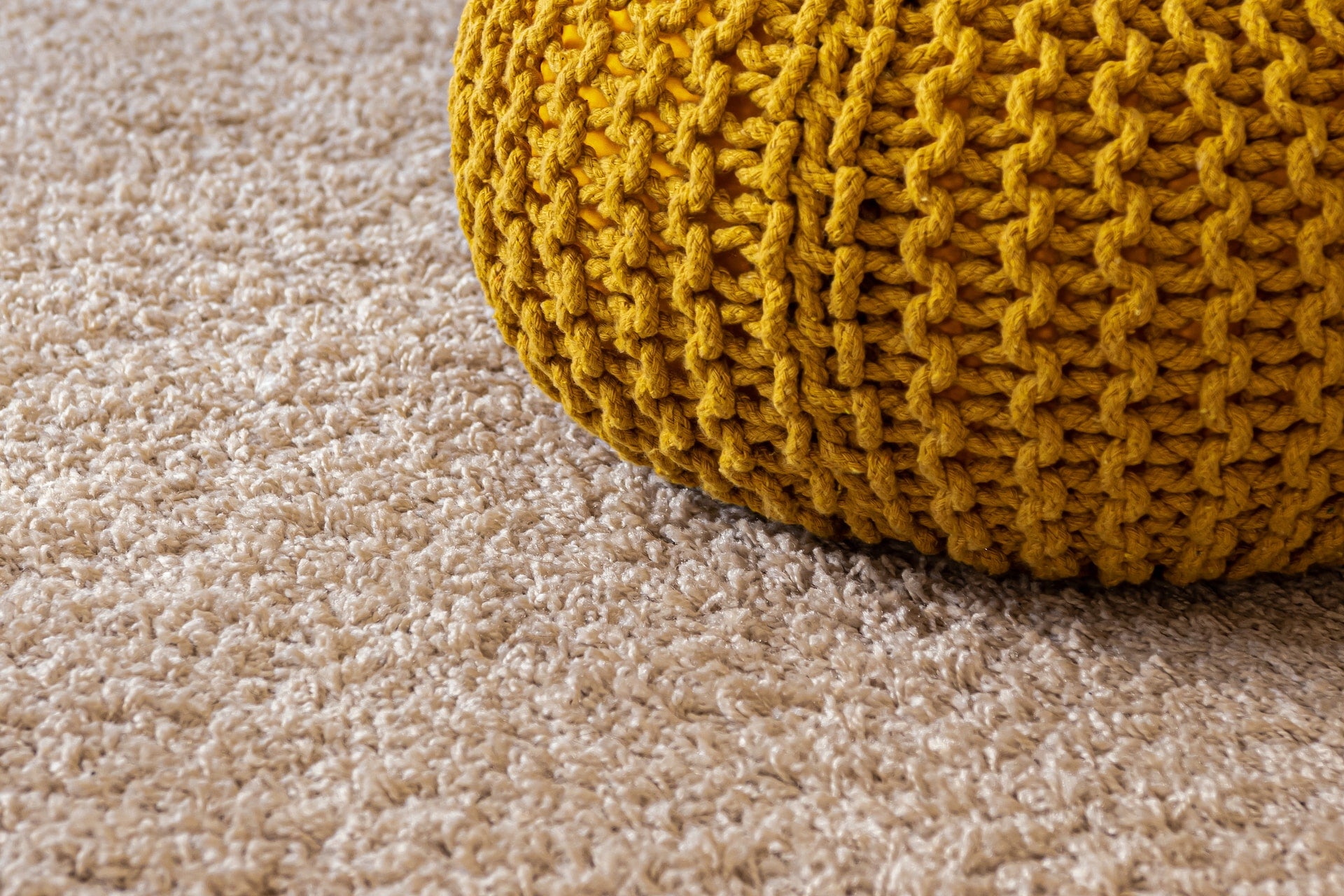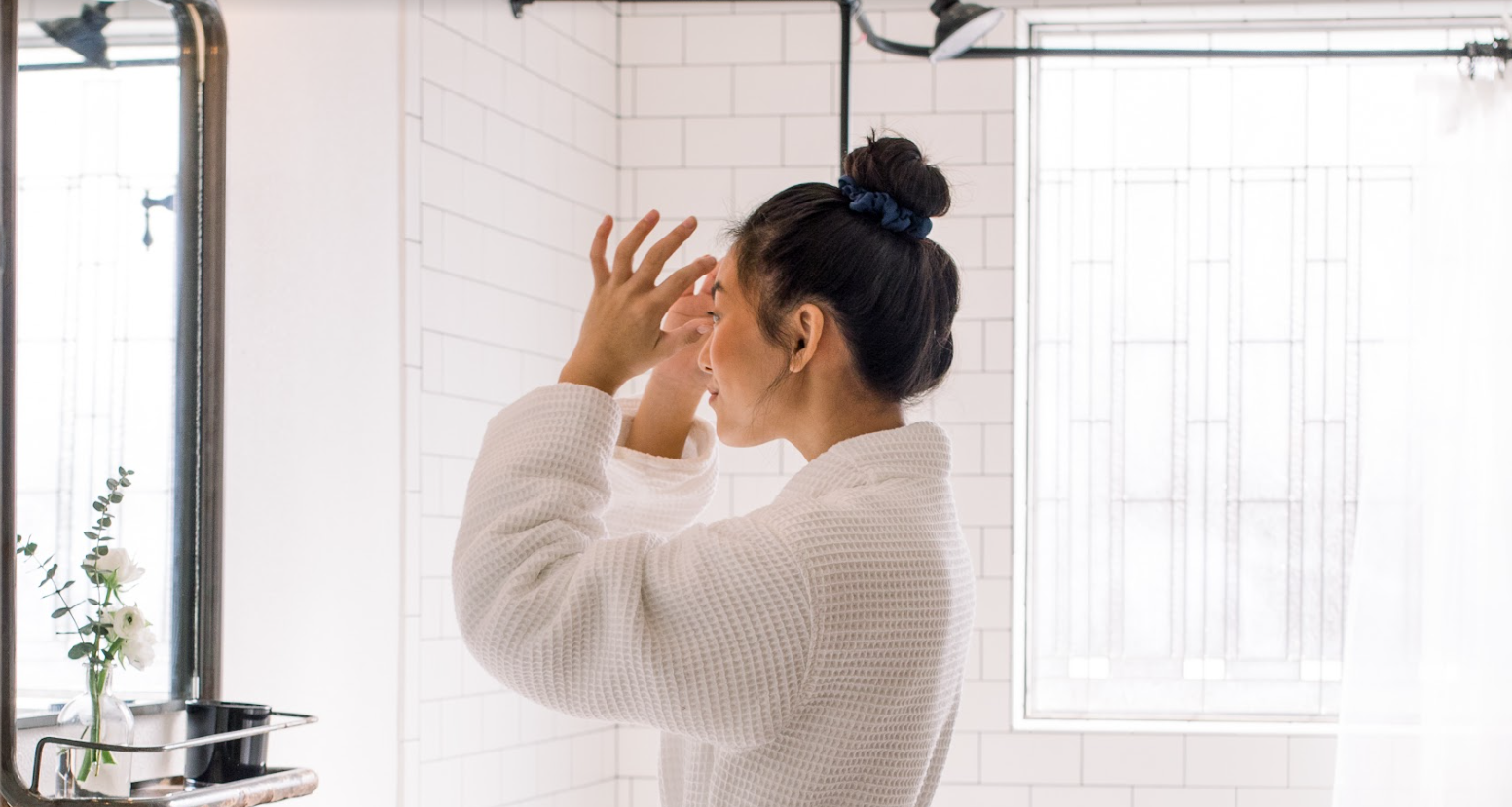
What Is New Carpet Allergy and How to Treat It
If you have new carpet recently installed and notice breathing problems, skin irritation, or eye discomfort, you might have a new carpet allergy. Newly-installed carpets can emit volatile organic compounds (VOCs) into the air. This triggers allergic reactions in sensitive individuals called new carpet allergy or carpet off-gassing.
Allergens Present in Your New Carpet

Allergens can trigger discomfort in human beings. Indoor allergens, including those found in carpets, play a significant role in triggering allergies and asthma. In fact, allergies affect approximately 30% of adults and 40% of children in the United States.
These are some of the common culprits from chemical compounds emitted from the carpet manufacturing process to resuspended particles due to regular activity on the rug. A study conducted found that some of these VOCs are emitted from carpets and measured in a large-scale environmental chamber.
- Formaldehyde is emitted from the carpet with a polyvinyl chloride backing
- Benzene is an aromatic compound found in adhesives and dyes used in carpets
- Toluene is a new carpet fume present in certain carpet backings and adhesives
- Xylene is found in carpet fibers, adhesives, and dyes
- Acetone is a solvent used in carpet production
- 4-Phenylcyclohexene is said to be the source of new carpet odors
- Dust mites are microscopic arachnids commonly found in carpets
- Mold and mildew thrive in damp and dark environments
- Pet dander is a result when animals shed dead skin cells
- Pollen comes from plants and trees from the outside environment
Symptoms of New Carpet Allergy

New carpet allergy can manifest through various symptoms, affecting individuals who are particularly sensitive or allergic to the allergens present in the carpet. These symptoms can range from mild to more severe and may include:
Respiratory Issues
One of the most asked questions is if new carpets cause respiratory problems. The short answer is yes. Individuals with new carpet allergies may experience respiratory symptoms such as:
- Coughing: Persistent or intermittent coughing may occur as a result of the release of volatile organic compounds (VOCs) from the carpet.
- Wheezing: Some people may experience a whistling or wheezing sound when breathing, indicating airway constriction or irritation.
- Shortness of Breath: Difficulty breathing or a feeling of breathlessness may occur, particularly in individuals with pre-existing respiratory conditions like asthma.
- Chest Tightness: A sensation of pressure or tightness in the chest may be experienced due to an allergic reaction triggered by carpet allergens.
Skin Irritation
Contact with certain carpet allergens can lead to skin-related symptoms, including:
- Rashes: New carpet skin rashes or hives may develop after direct contact with allergens present in the carpet fibers, adhesives, or dyes.
- Itching: Persistent itching, tingling, or a crawling sensation on the skin can occur as an allergic response to the carpet allergens.
- Dermatitis: In more severe cases, allergic dermatitis may develop, causing redness, inflammation, and blistering of the skin.
Eye Discomfort
Exposure to carpet allergens can also affect the eyes, leading to:
- Redness: The eyes may become red, bloodshot, or irritated due to contact with the allergens.
- Itching: Intense itching or a sensation of grittiness in the eyes may occur, causing discomfort and watering.
- Conjunctivitis: Allergic conjunctivitis, also known as "pink eye," can develop, characterized by redness, swelling, and a discharge from the eyes.
Headache and Fatigue
Some individuals may experience additional symptoms associated with new carpet allergies, including:
- Headaches: Allergic reactions triggered by carpet allergens can lead to headaches or migraines, varying in intensity.
- Fatigue: Prolonged exposure to allergens may result in fatigue or a general feeling of low energy.
It's important to note that the severity and specific symptoms can vary from person to person. If you suspect a new carpet allergy, it is advisable to consult with a healthcare professional for an accurate diagnosis.
Some Forms of Treatment Prescribed to Patients Who Experience New Carpet Allergy

In understanding the symptoms and exploring medical interventions, individuals can find relief and regain control over their wellbeing against new carpet allergy.
|
Symptoms |
Description |
*Possible Treatments How to Get Rid of New Carpet Allergies |
|
Respiratory Issues |
Coughing, wheezing, shortness of breath, chest tightness |
1. Prescribed inhalers or bronchodilators to manage airway constriction and improve breathing. 2. Allergy medications such as antihistamines or nasal corticosteroids to alleviate respiratory symptoms. 3. Avoidance of carpeted areas or implementation of proper ventilation strategies. |
|
Skin Irritation |
Rashes, itching, dermatitis |
1. Topical corticosteroid creams or ointments to reduce skin inflammation and relieve itching. 2. Antihistamines to alleviate itching and reduce allergic reactions. 3. Avoiding direct contact with the carpet or using protective clothing or gloves when handling carpets. |
|
Eye Discomfort |
Redness, itching, conjunctivitis |
1. Prescription or over-the-counter eye drops to reduce eye redness and soothe irritation. 2. Cold compresses or artificial tears to alleviate dryness and discomfort. 3. Avoiding rubbing or touching the eyes and thorough hand hygiene to prevent further irritation or infection. |
|
Headache and Fatigue |
Headaches, fatigue |
1. Pain relievers or prescribed medications to manage headaches. 2. Adequate rest and relaxation techniques to alleviate fatigue. 3. Implementing strategies to minimize exposure to carpet allergens, such as regular cleaning using enzymatic cleaners, using air purifiers, or considering carpet removal in severe cases. |
*Consult with a healthcare professional for an accurate diagnosis and personalized treatment plan.
The suggested treatments may vary based on individual circumstances, medical history, and the severity of the symptoms.
How Long Do New Carpet Allergy Symptoms Last?
The duration of new carpet allergy can vary from person to person and depends on several factors, including the individual's sensitivity, the specific allergens present in the carpet, and the measures taken to mitigate exposure. In most cases, the symptoms of new carpet allergy tend to improve and eventually subside within a few days to a few weeks as the carpet finishes off-gassing and the allergen levels decrease.
However, for individuals with heightened sensitivity or pre-existing respiratory conditions, symptoms may persist for a longer duration. If symptoms persist or worsen over an extended period, it is advisable to consult with a healthcare professional for a thorough evaluation and appropriate guidance.
Protecting Your Family From New Carpet Allergy

You can protect your family from the damaging symptoms of new carpet allergy. While there is no way to completely get rid of the chances of getting new carpet allergy, you can minimize allergies with these preventive measures:
-
Choose Low-VOC Carpets
Opt for carpets labeled as low-VOCs. These carpets release fewer chemical compounds into the air, reducing the risk of allergic reactions. Look for carpets that meet reputable indoor air quality certifications or standards.
-
Proper Ventilation
Ensure proper ventilation in the area where new carpet is installed. Open windows and use fans or air purifiers to increase airflow and facilitate the dissipation of airborne allergens and chemical odors.
-
Allow for Off-Gassing
Before installing furniture or occupying the space, allow the carpet to off-gas in a well-ventilated area. This process helps reduce the release of chemicals and allergens from the carpet.
-
Regular Carpet Cleaning
Maintain a regular carpet cleaning routine to minimize the accumulation of allergens in the carpet. Vacuum carpets with a HEPA (High Efficiency Particulate Air) filter regularly to remove dust, pollen, pet dander, and other particles that can trigger allergies. Consider professional carpet cleaning services periodically to deep clean and remove allergens effectively.
Check out our Guide on How to Use Our Natural Carpet Cleaner to ensure your carpets are thoroughly cleaned for every member of your household.
-
Use Allergy Covers
Consider using allergen-impermeable covers for carpets, especially in areas prone to high allergen exposure or for individuals with known sensitivities. These covers create a barrier, preventing allergens from becoming airborne and reducing contact with the carpet fibers.
-
Minimize Moisture
Moisture can lead to mold and mildew growth, exacerbating allergies. Take measures to prevent excess moisture in the carpeted areas by promptly addressing spills, maintaining proper humidity levels, and using dehumidifiers or fans in damp environments.
-
Avoid Carpet in High-Risk Areas
In spaces prone to moisture or humidity, such as bathrooms or basements, consider alternative flooring options like tiles, vinyl, or hardwood that are less likely to harbor allergens or support mold growth.
-
Test for Allergens
If you or family members have known allergies or sensitivities, consider allergy testing to identify specific allergens that trigger reactions. This information can help tailor preventive measures and treatment strategies more effectively.
-
Implement a No-Shoes Policy
Shoes can track in allergens from the outdoors, including pollen, mold spores, and other particles. Encourage family members and guests to remove their shoes before entering carpeted areas to prevent the introduction of allergens.
-
Air Purification
Use high-quality air purifiers with HEPA filters in rooms with carpeting to help remove airborne allergens. Air purifiers can effectively capture and reduce allergens such as dust mites, pollen, and pet dander.
Looking for even more tips? Our Ultimate Living Room Cleaning Checklist will come handy to reduce the effects of VOC emissions that cause new carpet allergy and will help you keep gatherings areas clean and organized on a daily basis.

























